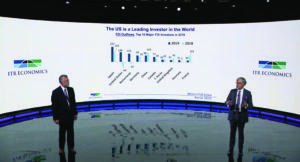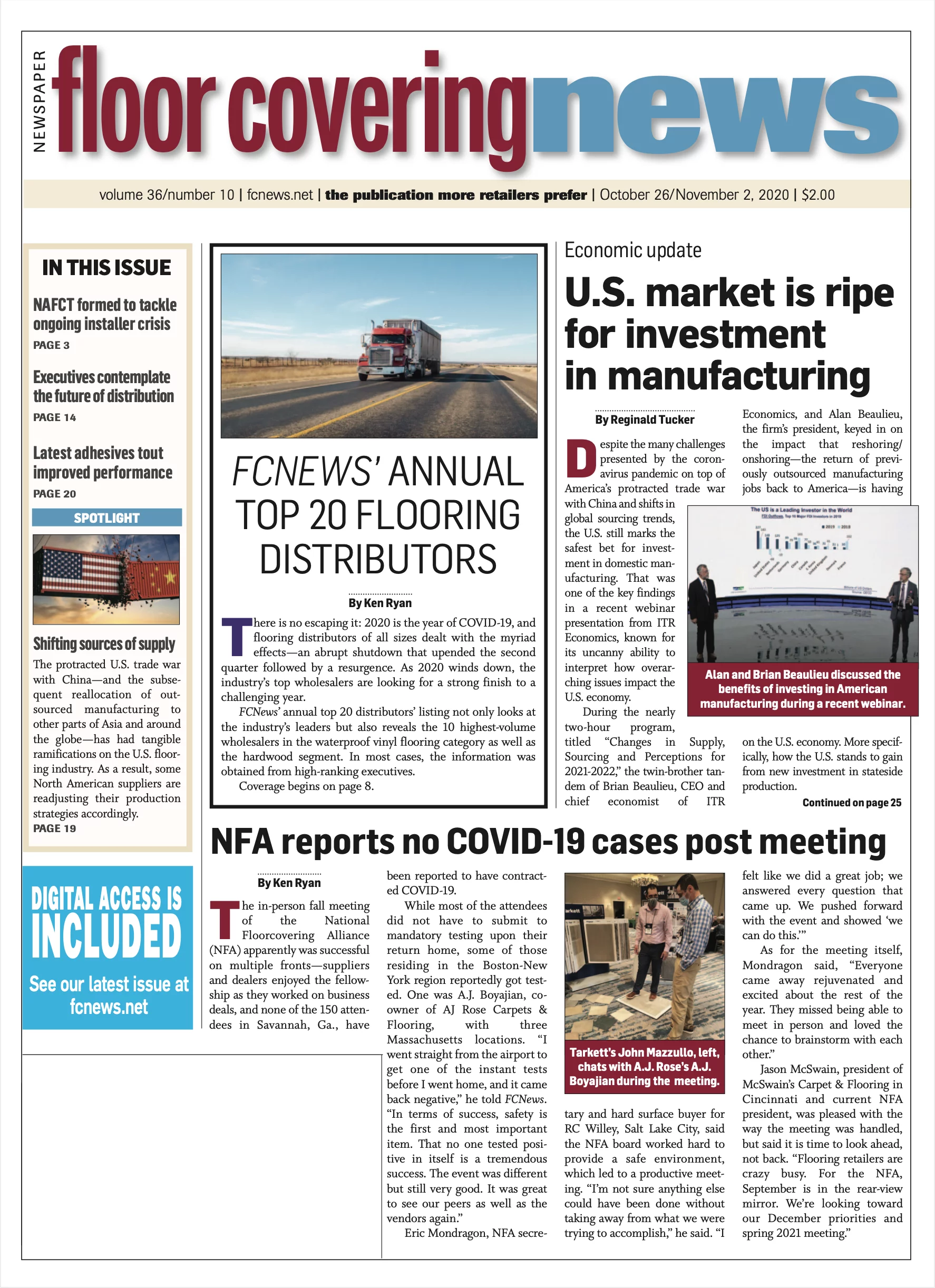Economic Update:
By Reginald Tucker

Despite the many challenges presented by the coronavirus pandemic on top of America’s protracted trade war with China and shifts in global sourcing trends, the U.S. still marks the safest bet for investment in domestic manufacturing. That was one of the key findings in a recent webinar presentation from ITR Economics, known for its uncanny ability to interpret how overarching issues impact the U.S. economy.
During the nearly two-hour program, titled “Changes in Sourcing and Perceptions for 2021-2022,” the twin-brother tandem of Brian Beaulieu, CEO and chief economist of ITR Economics, and Alan Beaulieu, the firm’s president, keyed in on the impact that reshoring/ onshoring—the return of previously outsourced manufacturing jobs back to America—is having on the U.S. economy. More specifically, how the U.S. stands to gain from new investment in stateside production.
ITR Economics cited encouraging statistics from the Reshoring Initiative, the leading authority on all things related to reshoring, which shows continued interest in domestic investment. Roughly 71% of respondents in a survey cited delays in shipping as the primary bugaboo. “People need their things,” said Alan Beaulieu. “Beyond delays in production, there’s also the issue of inconsistent quality. It’s the same issues I’m hearing from talking with clients. Some have sent back whole containers full of junk product, whether it was axles for a lawnmower or other products. It’s mind boggling what the people have to put up with, and they’re growing tired of it.”
And it’s not just U.S.-based companies that are accelerating the onshoring trend; it’s also firms headquartered outside the country that are directing more investments here. “The U.S. continues to be a major recipient of foreign direct investment,” said Brian Beaulieu. “Looking at 2019 alone, more money ($47 billion) floated into the U.S. than out of it.”

So, what makes the U.S. market so attractive these days? “It’s rule of law in the U.S. and the fact that America provides a stable source of energy,” Alan said. “It’s also a nation where there is a capital base that can be depended upon. There’s also mobility, which we take for granted here.”
When looking at the countries that top the list of those investing the most in the U.S., the results might be surprising to some (see chart). “Germany is No. 1,” Alan said. “They are still strong allies, and we hope it stays that way. Japan, which is also a major source of foreign direct investment in the world, invests a sizable amount in the U.S. Canada is up there as well.”
ITR statistics show Japan is investing around the world primarily because its labor force is shrinking. “Their population declines every year due to an aging population,” Alan said. “Hence their emphasis on automation and the use of robotics. They’ll do everything they can, but in the long run they need to make sure that they are in control of businesses, so they’re setting up shop in other nations, including the U.S.”
The trend is not just about gaining a more favorable return on investment—although that’s a big part of it, of course. For many U.S.-based companies bringing manufacturing jobs back to the states, it’s ultimately about better controlling the supply chain. “It’s basically about having closer proximity to customers and markets,” Brian said. “It sounds so simple, but really it’s important. If you want to tighten up your supply chain, you have to make sure your producers and distributors are in your backyard so you can meet your customers where they live on a more secure basis.”
In terms of specific regions drawing the most investment, ITR Economics cited the Southeast U.S. as well as parts of the Midwest. “These are run by governments that tend to welcome companies with open arms,” Brian said. “Michigan is in the midst of a renaissance right now in terms of their ability to come back from the depths of where they were. I also love see ing Ohio, Kentucky, Indiana on that list as well. It’s also based on the areas where workers are readily available.”
These shifts are also changing the perception of America’s stand- ing among other leading manufacturing countries across the globe, according to ITR. “China is the world’s largest manufacturer by output—they represent 28.4% of total output—but the U.S. is No. 2,” Alan said. “Many people might be surprised to learn the U.S. is the second-largest manufacturer in the world today.”
While the reshoring trend is encouraging, ITR said it’s not realistic to expect the U.S. will produce the bulk of what it consumes domestically. “Like it or not, we are globally intertwined,” Brian said. “For those folks who say we should just make everything ourselves, that ship sailed a long time ago. We’re too entwined in the world to make everything and to be separate from everybody else.”

